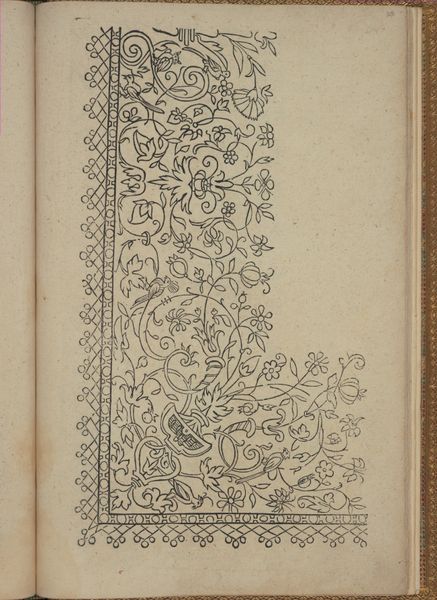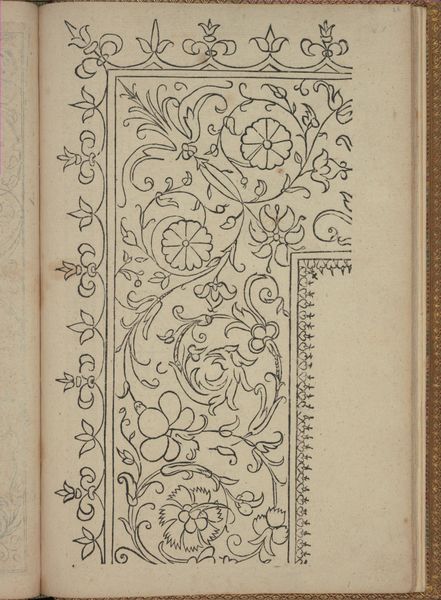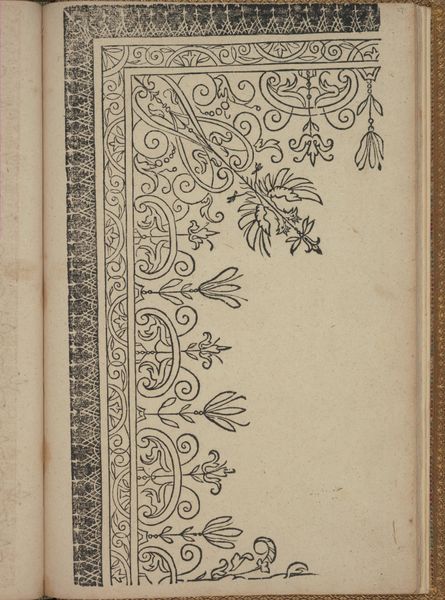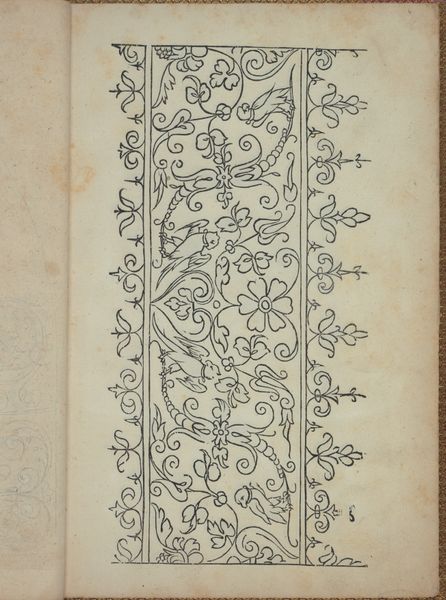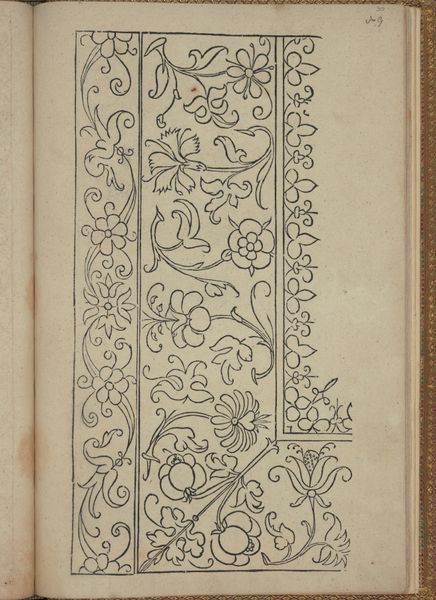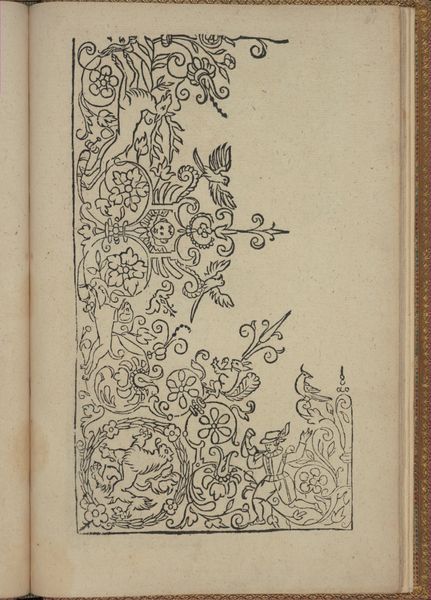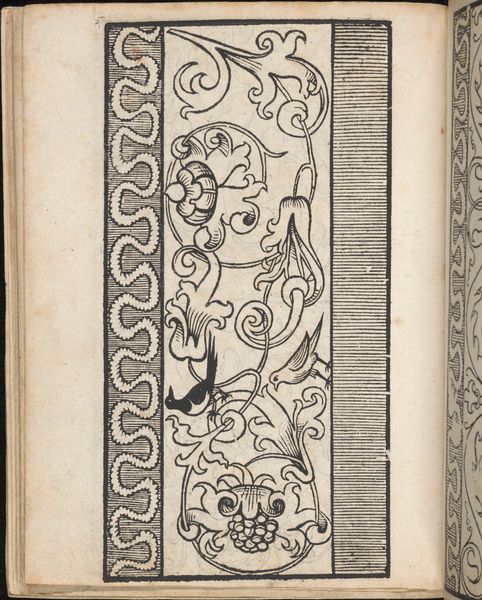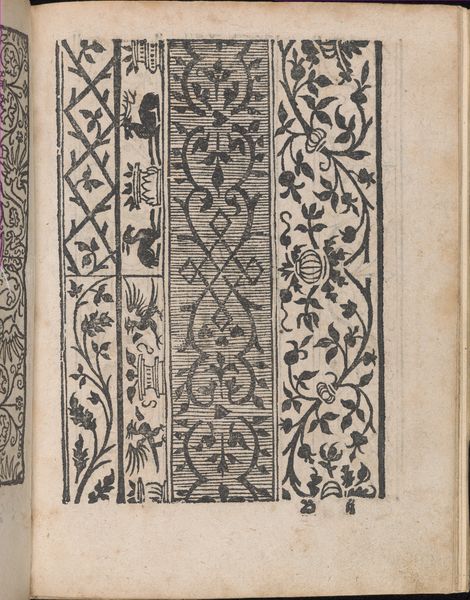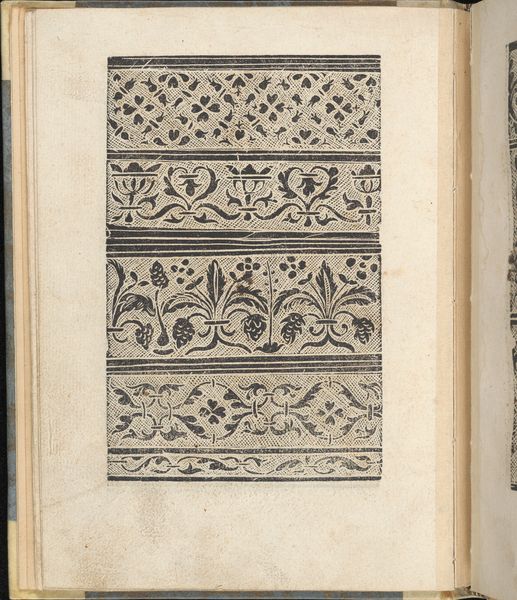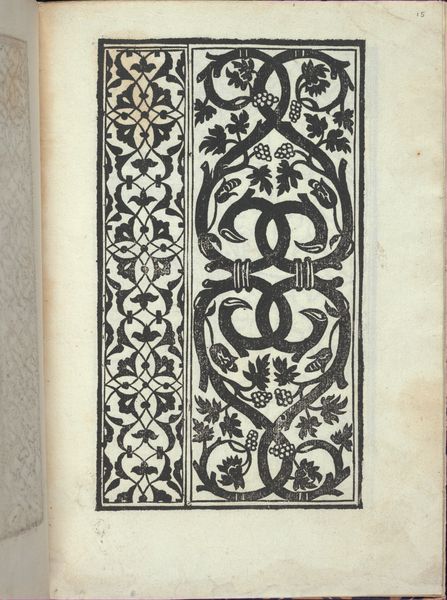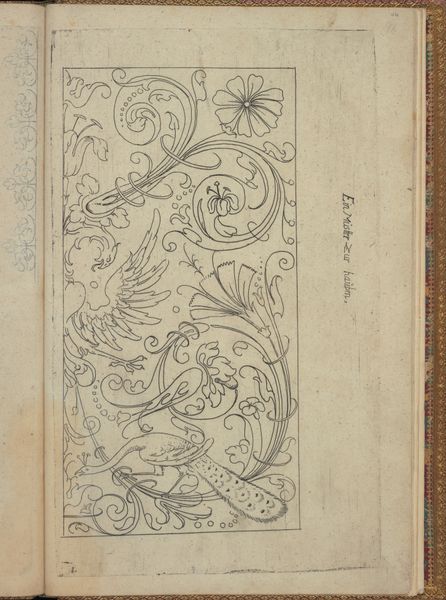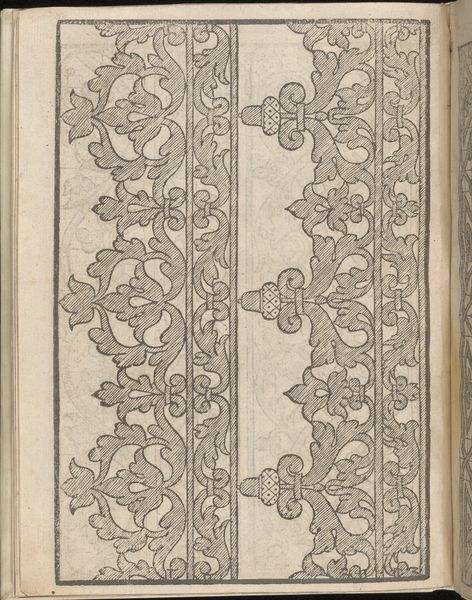
drawing, ornament, print, paper
#
drawing
#
ornament
#
toned paper
#
medieval
# print
#
paper
#
geometric
#
line
Dimensions: Overall: 12 x 8 1/16 in. (30.5 x 20.5 cm)
Copyright: Public Domain
Curator: Here we have a page from Andreas Bretschneider's "New Modelbüch," created around 1615. This particular image, "Page 34r," is housed in the Metropolitan Museum of Art. It's a drawing and print, showcasing elaborate ornamental designs on toned paper. Editor: My immediate impression is of delicate precision. It reminds me of patterns found on tapestries, wallpapers, or even tattoos. There's a hypnotic repetition in the linework, a real sense of meditative design. Curator: Indeed. These pattern books served a crucial role in disseminating design ideas. They provided artisans with readily available motifs for everything from embroidery to metalwork. The "New Modelbüch," exemplifies this function perfectly. The socio-political climate of the 17th century heavily influenced craft and design. This type of print allowed greater artistic uniformity, in line with increasing global trade networks at the time. Editor: I find it fascinating how the seemingly simple patterns reflect broader shifts in production and cultural exchange. The book's geometric and floral elements are very carefully intertwined, creating an ideal model of artistic expression. Are there visible references, maybe hidden symbolism for a specific audience? Curator: Scholars have argued that many of these patterns are influenced by Italian Renaissance designs, with the floral motifs representing growth, prosperity and religious iconography relevant to its time. Modelbooks were essential educational tools and helped shape a shared design language across workshops. In turn they affected how consumers interacted with their material world. Editor: It almost feels revolutionary for its time, even if presented in a seemingly subdued tone. In our contemporary framework, where digital sharing is almost instantaneous, to have a book doing that work... the patience of the artist... and, as you mentioned, its ripple effects. The historical object is fascinating in its intersectional meanings. I’d argue that this artwork demonstrates its long influence. Curator: I completely agree. It provides us a lens through which to examine shifts in taste and production and the politics behind image-making, specifically within crafting communities. Editor: Thank you. Viewing art through history offers a powerful experience. I will revisit "Page 34r," understanding more about the art's journey.
Comments
No comments
Be the first to comment and join the conversation on the ultimate creative platform.
